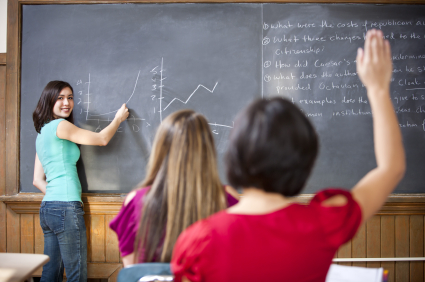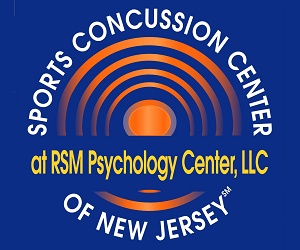Need for cognitive rest
While a child or teen is experiencing post-concussion symptoms, it is very important that he not only get as much sleep as possible and limit exertion in activities of daily living, but limit scholastic and other cognitive (e.g. mental) activities to allow the brain time to heal. This means limited:
- text messaging
- video games,
- television
- movies
- computer time
- homework
- Possible limits on school attendance and social activities (parties, dances, attending games etc.).

Post-concussion strategies for the classroom
Even when a student-athlete has recovered enough from a concussion to return to the classroom, the concussion may still affect their thinking, ability to remember (especially new information), and organization, and interfere with school performance.
Parents should understand that problems with poor short-term memory, concentration and organization may, for a short time, turn a good student into a poor student.
The best way to address these issues is to decrease a student's academic workload, from taking time off from school to going partial days.
To help maximize the ability to focus, stay organized, and remember important information while recovering from a concussion, Dr. Karpf offers the following tips for students when they do return to the classroom:
To improve focus and organization
- Ask for preferential seating in the classrooms -Choose a seat at the front of the room or in the midst of the action. Try to sit closest to the teacher. When possible, you should not sit by the door or the windows.
- Consistently write down your homework assignments (in an assignment book or personal organizer) as soon as they are posted. Color coding your textbooks, notebooks, and folders for each subject will help you to stay more organized. As soon as you receive a handout, you can immediately place it in the appropriate folder.
- "Chunking" of homework assignments is recommended. It will be helpful to take short breaks between assignments. You should plan for long-term assignments by breaking the assignment down into steps and setting deadlines for completion of each step.
- When given directions, repeat them to yourself. This strategy helps maintain the verbal information in short-term memory until the instructions can be completed.
- Complete one task and then put materials away before starting the next task.
- Previewing/pre-reading material (especially for courses with a large lecture component) before class to help you listen and comprehend material presented in class. Prior to any reading assignments, you would benefit from reading the questions at the end of the chapter first to aid in your comprehension.
- Note-taking strategies: You may have difficulty listening and copying down notes at the same time. Using a laptop to take notes would be one helpful way to address this. You may also want to read material on note-taking strategies.
To improve memory and academic performance
- Translate - new information into your own words. When learning something new, say it your way. You can only remember and fully use ideas that you understand.
- Repeat- Just absorbing information is not enough. You have to hang onto it. To reduce memory seepage, try this: rehearse the material (repeat at least five times) immediately.
- Relate the new information to something you're familiar with - generate your own examples.
- A picture is worth a thousand words. Try to picture what you see, hear, or read. You could use flow charts, outlines, flashcards, etc. or make a "movie in your head" by visualizing a concept or an event. Add color and movement to the pictures in your head.
- Practice output by explaining, doing, or teaching the new information to someone else.
- Learning occurs in spurts. Try not to take in too much at one time. You should utilized "spaced practice" (i.e. working for 20-30 minutes on a subject and then moving on to different subjects) to enhance your long term retrieval. You will learn more in several shorter study sessions than one long one.
- Extra in the middle: You should spend extra time studying the middle sections of study material as these sections are less easily remembered.
- Variety: You should do something different each time the material is studied. Reading notes over and over is a less efficient and effective means of learning information. A better approach would be to transcribe notes on a word processor, reorganize, outline the notes, and then color code the material.
- Use memory aids: You should employ memory aids in order to recall information, including mnemonics and acronyms. Examples of mnemonics include: My Very Excellent Mother Just Served Us Nine Pizzas (for the order of the planets) and Please Excuse My Dear Aunt Sally (for the order of operations)
- Review material before bedtime - your brain actually processes and stores information in long-term memory more efficiently while you sleep because it has less interference from the outside world
- Go it alone at first. You should consider studying alone at first and becoming familiar with the material. Once you feel more confident of the material and have reviewed the material thoroughly, you could study with one or more of your classmates. During that study session, you and your classmates could trade off asking one another questions about the material. This would allow you to expose any gaps in your knowledge base.
- Practice tests can be an excellent way to study for tests. You could develop a practice test on your own or you could split the work up with other students in a study group.
- Jog memory: If you're struggling to recall information needed information, try to "jog" your memory. If you've lost something, think back to when you last had it - what did you do next? And after that? Mentally, walk yourself through each of the activities that followed - this may enable you to recall what happened to the missing item.
- Use a cue - symbolic reminders (the proverbial strong around the finger) are helpful. So too are memos, timers, calendars, notes, etc. Keep them in visible places.
- Get organized - have fixed locations for all important papers, phone numbers, keys, glasses, wallets, etc. Think carefully about logical placement of such items or this won't work very well.
- Develop routines - routines can anchor memories so that they don't drift away.
Note: Athletes with a concussion should not return to sports until they are able to return to the classroom without accomodations.
October 27, 2013 update: For an article discussing detailed recommendations contained in a 2013 clinical report by the American Academy of Pediatrics on the kind of adjustments that may be necessary to help a concussed student-athlete successfully return to the classroom, click here.
May 11, 2015 update: For an article discussing a new study detailing the nature and extent of academic difficulties resulting from concussion, click here.
Sources:
Halstead ME, et al. Clinical Report - Returning to Learning Following a Concussion. Pediatrics doi:10.1542/peds.2013-2867 (epub October 27, 2013).
Ransom DM, Vaughan CG, Pratson L, Sady MD, McGill CA, Goia GA. Academic Effects of Concussion in Children and Adolescents. Pediatrics 2015;135(6). doi:10.1542/peds.2014-3434)(published online ahead of print May 11, 2015)
Brooke de Lench is the Executive Director of MomsTEAM Institute of Youth Sports Safety, Founder and Publisher of MomsTeam.com, producer and director of the PBS documentary, The Smartest Team: Making High School Football Safer, and the author of Home Team Advantage: The Critical Role of Mothers in Youth Sports (HarperCollins 2006).
Most recently revised November 7, 2016









